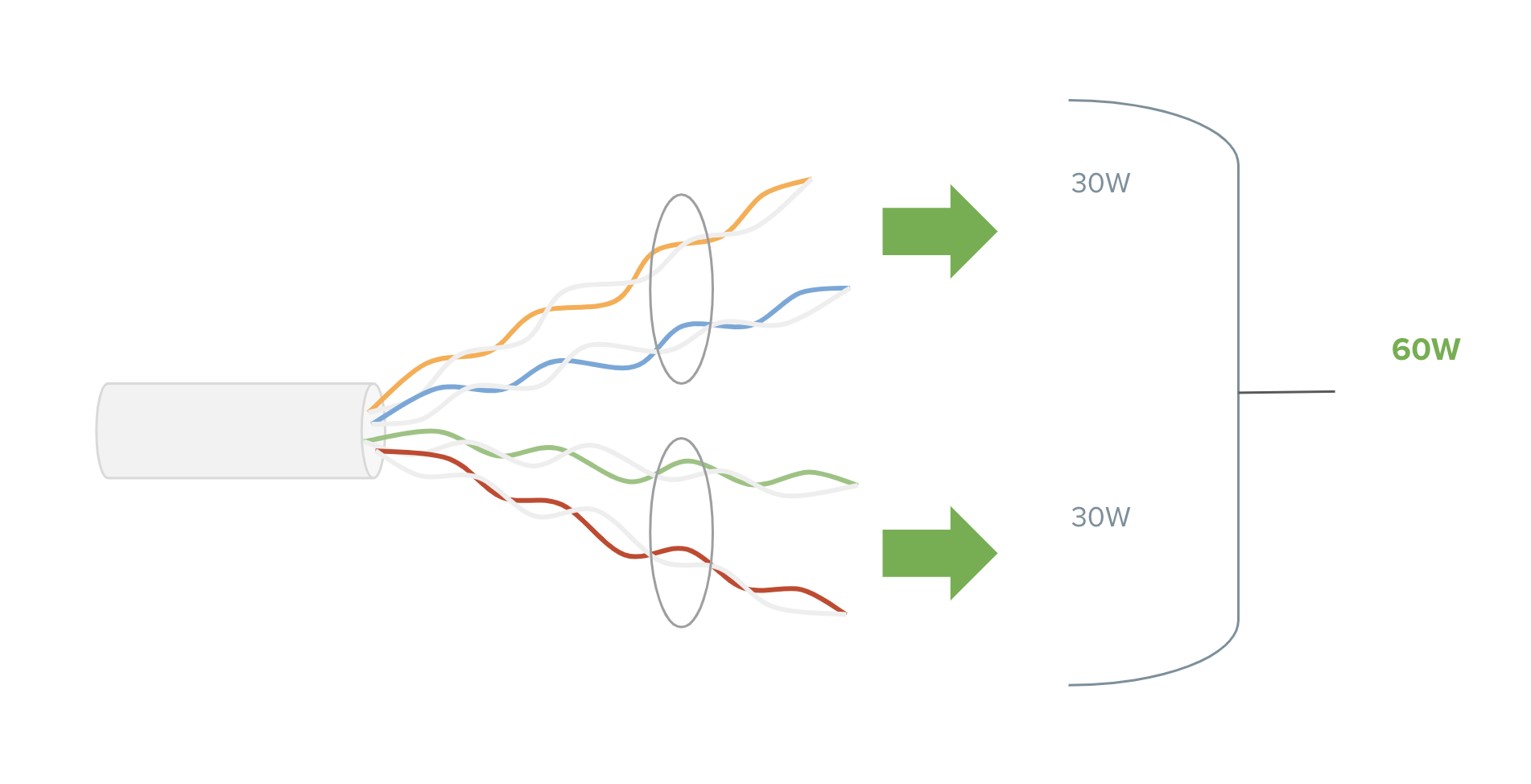MS390 802.3bt Support
Overview
802.3bt is the IEEE Standard for power over Ethernet over all the four pairs of twisted wires. Cisco Universal Power Over Ethernet (Cisco UPOE) is a Cisco proprietary technology (which was introduced before 802.3bt standard) that extended the IEEE 802.3at PoE standard to provide the capability to source up to 60 W of power over standard Ethernet cabling infrastructure (Class D or better) by using the spare pair of an RJ-45 cable (wires 4,5,7,8) with the signal pair (wires 1,2,3,6).
Support for 60W of power of Ethernet delivery is introduced for the first time in Meraki Switching portfolio with the MS390s. Prior to MS15 firmware, the default behavior of the supported MS390 models was to deliver 60W power via Cisco's pre-standard UPoE mechanism which limited the scope of supporting devices that required 802.3bt power to operate with full capabilities .
However, with the inception of MS15, all supported MS390 models will now by default support the 60W power delivery via 802.3bt which is the IEEE Standard for power over Ethernet over all the four pairs.

Supported Models: MS390-24U, MS390-48U, MS390-24UX, MS390-48UX, MS390-48UX2
Firmware Requirement: MS15 and above
Use Case
-
The next-Gen access points requiring higher power delivery via 802.3bt standard negotiations will benefit from this functionality.
-
There is a growing ecosystem of IEEE 802.3bt compliant devices in the market such as high-powered surveillance cameras and other smart building products, that will largely benefit from this functionality.
Useful Terminologies
-
Power Sourcing Equipment (PSE): The device that supplies power over the Ethernet cable, such as a PoE capable switch
-
Powered device (PD): The device that draws power over Ethernet, such as an access point or camera.
-
Class: The class defines the maximum power being sourced or drawn in the system. Each class defines the maximum power that can be delivered by the PSE to a PD. The power range for each class is shown in Table 1.
- Device types: The device type determines the major characteristics of the PSE and PDs. An overview of the types with classes and other details is shown in Table below. Type 1 and Type 2 PSEs provide power over only two pairs. Type 3 PSE can provide power on two pairs, supporting all PDs up to Class 4 (25.5 watts), or it can provide power over four pairs, supporting all PDs up to Class 6 (51 watts). Type 4 PSE can provide power over four pairs and can support all PDs up to Class 8 (71.3 watts).
|
Type |
Class |
Power over twisted pairs |
PoE standard |
Maximum power from PSE |
Maximum power to PD |
|
1 |
0 to 3 |
2 pairs |
802.3af (PoE) |
15.4W |
12.95W |
|
2 |
4 |
2 pairs |
802.3at (PoE+) |
30W |
25.5W |
|
|
|
4 pairs |
Cisco UPOE |
60W |
51W |
|
3 |
5, 6 |
4 pairs |
802.3bt (60W) |
60W |
51W |
|
4 |
7, 8 |
4 pairs |
802.3bt (90W) |
90W |
71W |
Feature Specification
- The 802.3bt mode on MS390 supports Type 3 devices that includes two classes (class 5 and class 6).
- IEEE 802.3bt is fully backward compatible with the older IEEE 802.3af PoE and IEEE 802.3at PoE+ standards.
Configuration
With MS15 or higher firmware, the supported MS390 models are by default in 802.3bt power mode. Hence there is no additional configuration needed from dashboard on the supported MS390 models to be able to power up 802.3bt compliant devices.
Note: If you have legacy devices that do not successfully negotiate 802.3bt power delivery due to lack of support for CDP|LLDP extensions and require forcing 4 pair power delivery to operate, please reach out to Meraki support for assistance.

